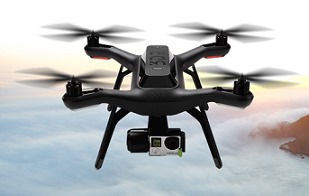Hardware
The PCB is designed using KiCad. Have a look at the links under the Resources heading at the top of this page to find all files. Currently I have no assembled PCBs or kits to sell, but you can order bare PCBs from hackvana with these gerber files. Since hackvana got so many orders for my ESC, Mitch wrote a wiki page about how to order VESC boards from him. That makes it super easy to order the PCBs from him.
PCB는 KiCad를 이용해서 설계되었습니다. 모든 파일들을 보기 위해서 이전 글의 'Resources' 링크를 참조하시기 바랍니다. 현재 저는 조립되지 않은 PCB나 판매를 위한 키트를 갖고 있지 않습니다. 이 gerber 파일들을 이용해서 hackvana로부터 주문할 수 있습니다. hackana는 저의 ESC에 대한 매우 많은 주문을 받고 있기 때문에 Mitch는 그로부터 VESC 보드를 어떻게 주문하는지에 대하여 wiki page를 작성하였습니다. 이는 그로부터 PCB를 주문하는 것을 매우 쉽게 합니다.
The components in the BOM can be ordered from mouser.com. Mouser numbers are included in the BOM as well. Make sure to order a bit extra of small capacitors and resistors in case you drop some of them and since the price doesn’t change much at all. Last I ordered, ordering 10 MOSFETs was cheaper than ordering 6 because there is a price break at 10, so have a look at the price breaks as well.
BOM에서 부품들은 mouser.com로부터 주문할 수 있습니다. 게다가 Mouser 번호들은 BOM에 포함되어 있습니다. 경우에 따라서 여분의 작은 커패시터나 저항들을 주문하세요. 이는 여러분이 일부 부품을 잃어버릴 수도 있고 가격이 크게 변하지 않지 때문입니다. 제가 마지막으로 주문했을때 10개의 MOSFET을 주문하는 것이 6개를 주문하는 것보다 저렴하였습니다. 왜냐면 10개에서 가격 할인이 있기 때문입니다.
For assembling the PCBs, the following pictures are useful (the latest versions can be found on github):
PCB의 조립을 위해서 다음의 그림이 유용합니다(최근 버젼은 github에서 찾을 수 있습니다):
Remember to put an electrolytic capacitor close to the ESC on the supply cable. How large it has to be depends on the length and inductance of the battery cables, but I usually use a 2200uF 63V capacitor.
전해 커패시터는 전원 케이블 상의 ESC에 가깝게 위치해야 함을 기억하세요. 이는 밧데리 케이블의 길이와 인덕턴스에 크게 의존합니다. 그러나 저는 보통 2200uF 63V 커패시터를 사용합니다.
SOLDERING TIPS
This is the best tutorial I have seen so far. It really is as easy as it looks when done right.
Flux is essential. Without flux, it won’t work. I use a flux pen.
Lead-free solder is no good. It has more poisonous flux, requires more heat, gives lower quality and is difficult to handle. Don’t use lead-free solder.
Use a flat, screwdriver-shaped tip. Don’t use a cone tip, because putting solder on the top of it is almost impossible.
If you get bridges between smd pins, removing them is easy with a soldering wick.
Make sure to get the alignment right for the microcontroller when soldering the first corner. If you solder multiple corners and the chip is misaligned, you have to use hot air and remove it, then clean the pads and start over.
Here is a video on the technique I use to solder the pad under the DRV8302:
I just put solder on the pad and use a hot air soldering station. Again, using leaded solder makes it easier. When soldering the DRV8302, I first solder the pad using hot air and then I solder the pins with a soldering iron. Notice that the pad under the DRV8302 must be connected for it to work, since it is the ground connection.
패드 위에 solder을 놓고 hot air soldering station를 사용합니다. 납이 함유된 solder가 더 쉽습니다. DRV8302를 납땜할 때 저는 우선 hot air를 사용하여 패드를 땜질하고 나서 인두기로 핀들을 땜질합니다. DRV8302 밑에 패드는 작업하는 동안 연결되어야만 합니다. 이는 접지이기 때문입니다.
VESC Hardware by Benjamin Vedder is licensed under a Creative Commons Attribution-ShareAlike 4.0 International License.
'Flight Controller 이해 > 전자속도제어기(ESC)' 카테고리의 다른 글
| VESC 하드웨어(v4.8) 회로도 (0) | 2017.12.21 |
|---|---|
| Embitz에서 VESC 펌웨어 컴파일 방법 (0) | 2017.12.17 |
| VESC - Open Source ESC(4) (0) | 2017.11.09 |
| VESC - Open Source ESC(2) (0) | 2017.11.04 |
| VESC – Open Source ESC(1) (0) | 2017.11.03 |





